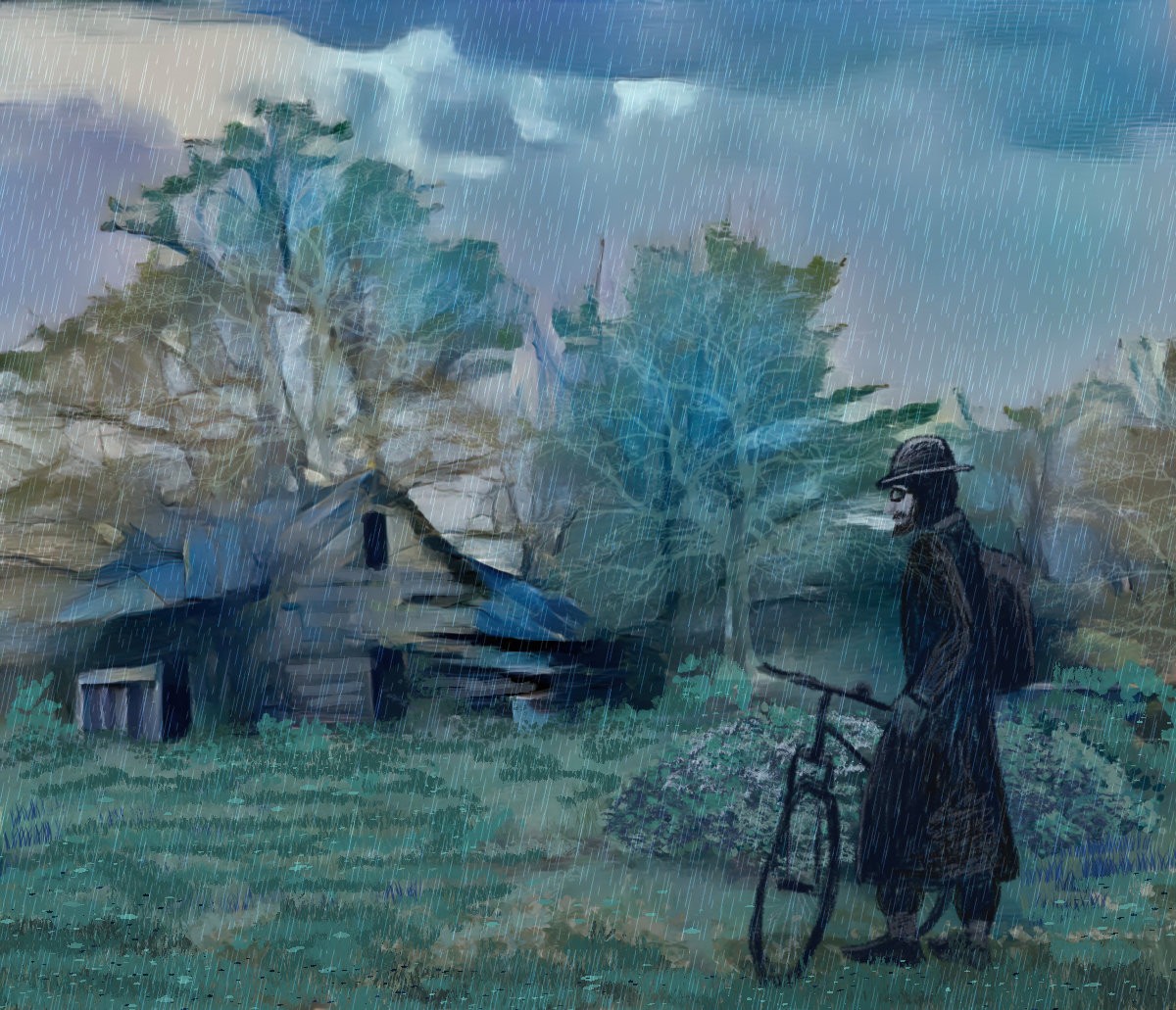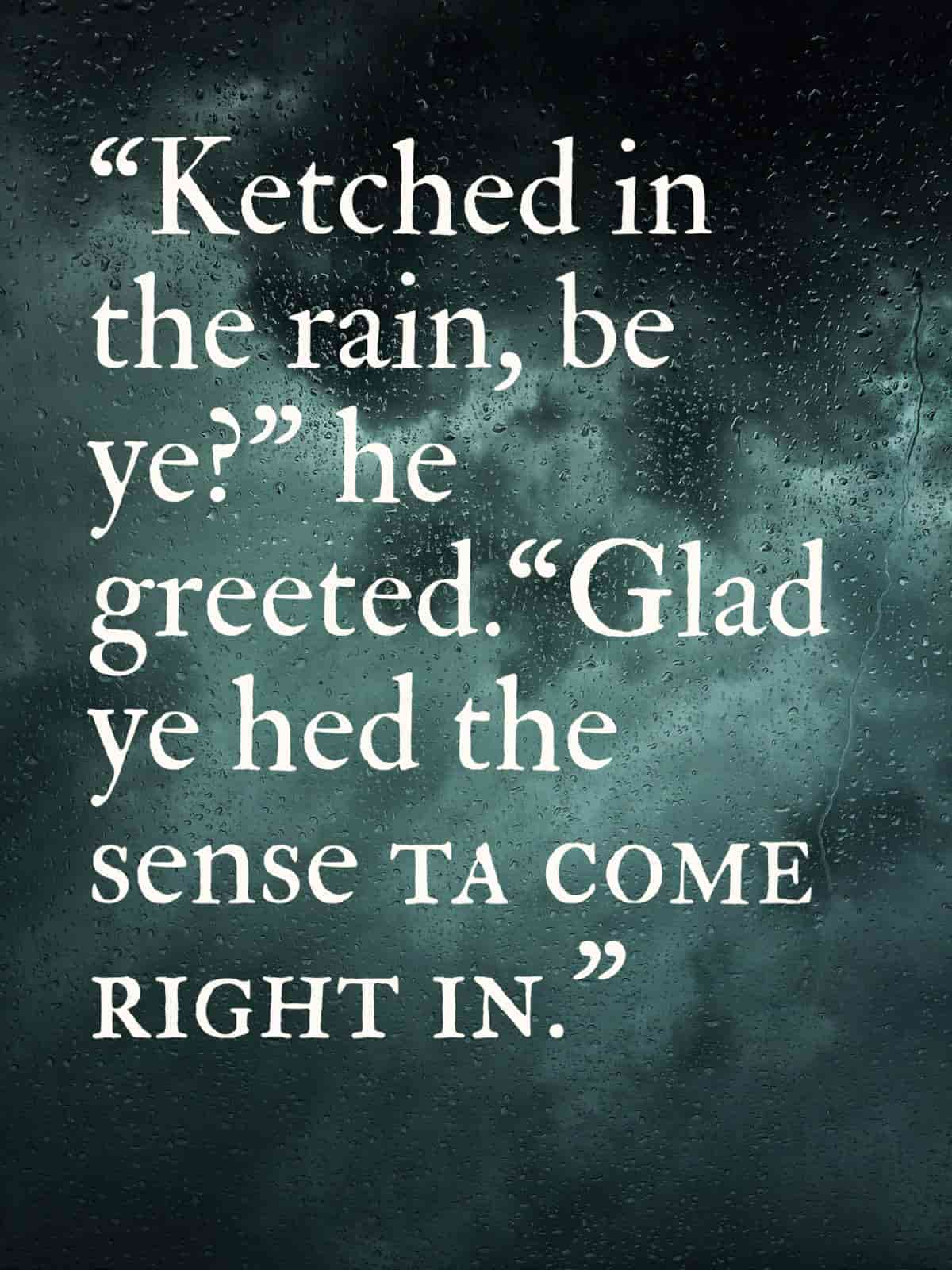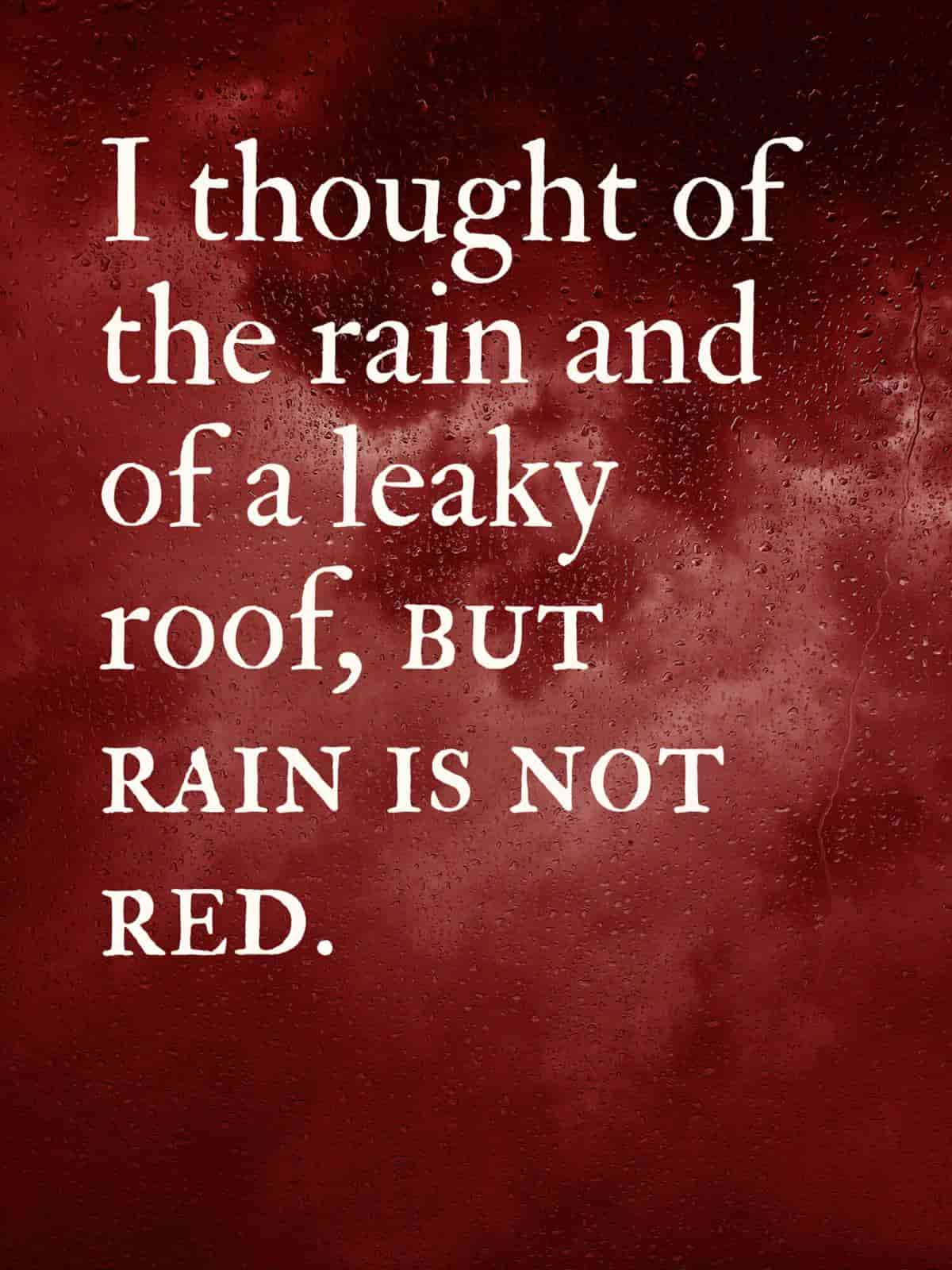“The Picture In The House” is a short story of about 3,300 words by American writer H.P. Lovecraft. You don’t have to have read Lovecraft to have been influenced by the work of Lovecraft. The author was a terrible person and if you don’t want to go back to the source, that’s absolutely fine. Guaranteed, you’ve encountered Lovecraft anyway, because so many writers have been influenced by him.
Today I’m reading “The Picture In The House”. I’ll let you know what happens.
WHAT HAPPENS IN “THE PICTURE IN THE HOUSE”
THE PLOT IN A NUTSHELL
- A man is on a journey
- Nature dictates he deviate from the well-worn path
- He stumbles upon a strange, old house
- He goes inside
- And encounters the supernatural.
This is a story about the magical powers of art, in this case the power of a disturbing drawing to manipulate its viewer.
THE FULL PLOT
The story opens in a faux- non-fiction style, with a description of the sorts of people who go looking for ‘horror’. I’m thinking the modern -day equivalent might be cyclone chasers. Imagine a magazine article opening a description of such people, and the spooky places they go.
First Lovecraft describes all the places white people naturally think of when thinking ‘horror realm’: sinister monoliths on uninhabited islands (which clearly aren’t ‘uninhabited’ — who made the monoliths?)
In the 1800s, Gothic writers tended to set their stories in castles. Later writers such as Lovecraft moved away from Medieval themes towards early 1900s modernity and now the castle becomes the old house. These houses are far removed from modern civilisation. They are preserved as islands in nature.
But before the end of the opening paragraph he brings American readers back to America, to the ‘lonely farmhouses and backwoods of New England’, no less. I’m no American, but even I can tell you that the farmhouses of New England would make a lovely photographic essay. Lovecraft is prepping to take the cosy and familiar, and turn it into something sinister.
‘Most horrible’, according to our narrator, ‘are the little unpainted wooded houses remote from travelled ways’. At this point I’d encourage you to investigate the history and function of American road trip stories, an American spin on the 3,000-year-old Odyssean mythic structure. Long story short, if you deviate from the set path, you get yourself into trouble. But you can’t win at this game, because if you stick to the set path you won’t grow spiritually. (And you won’t arrive home with any interesting stories to tell.)
These derelict little houses are ‘usually squatted upon some damp grassy slope or leaning against some gigantic outcropping of rock’. Note the personification. (You can’t squat unless you have legs, probably human.) Notice also how authors so often place houses near some slope where they could easily slip right off. (One contemporary short story example of a narrative which opens this way is “Flower Children” by Maxine Swann, set in America’s hippie era.)
Are you feeling uneasy about this Lovecraftian little road trip yet? Good.
Next, he turns the trees into monsters: ‘vines have crawled and the trees have swelled and spread’.
Also, the windows of the houses are eyes. It’s a good idea to mention madness at this point: ‘but the small-paned windows still stare shockingly, as if blinking through a lethal stupor which wards off madness by dulling the memory of unutterable things’.
If you’re reading a horror story and something is so horrible it’s ‘unutterable’, the author is dealing in cosmic horror tropes. In these stories, very often, the main character goes mad at the end. So don’t fall in love with him or anything. (And it’s almost always a ‘him’.)
So we don’t fall in love with our main character, he hasn’t even been introduced yet. Wait a godforsaken second, the main character hasn’t been mentioned. The main character is us! Lovecraft has expertly written a second-person opening without making use of that rather annoying second-person pronoun e.g. ‘You are travelling along the back country roads of New England… Now you see a gigantic outcropping of rock…’ Nope, you can make like Lovecraft and achieve the same effect by writing in this documentary style.
Also, throw in a few details about how the shadows fall. If you can link these shadows to death, all the better: ‘They are almost hidden now in lawless luxuriances of green and guardian shrouds of shadow..’
Now we are primed to ask the question: Who the hell lives (or lived) in these creepy houses? Basically, a bunch of Puritans who felt too restricted by society, so they made a break for it, returned to the wild and went mad. Without the rules of civilisation, their natural sin bubbled up and ‘these folk were not beautiful in their sins’. (This suggests the existence of folk who are beautiful in their sins?)
Now the story switches to first person narrative. ‘It was to a time-battered edifice of this description that I was driven one afternoon in November, 1896…’
I’m reading this story in 2022, so that’s like an author writing in 2022 setting a story in 1998. It was a previous century, but also? Not that long ago. Long enough for the narrator who have supposedly gotten a handle on what happened, and to overcome any lingering madness (or what we might today call PTSD?).
But this narrator isn’t one of those crazy horror hunters he was just complaining about. Nope, this guy had a proper, serious reason for visiting the Miskatonic Valley. He was on a ‘quest for certain genealogical data’. In very fancy, learned words he explains why he was riding a bicycle. ‘…from the remote, devious, and problematical nature of my course, had deemed it convenient to employ a bicycle despite the lateness of the season.’
Dude. No one has to justify why they’re riding a bicycle. But if he talks like that I’m glad he’s riding a piddly little bicycle. He’s now vulnerable to predators. Haha.
By the way, is the Mistatonic Valley a real place? No, this place is in what we now refer to as ‘Lovecraft Country’ — Lovecraft’s reimagining of the top of the East Coast of America. People have made detailed maps. (And there is now an excellent TV series called Lovecraft Country, which uses the phrase in a different way, and turns Lovecraftian racism on its head.

The TV series is based on a novel by Matt Ruff.)
Lovecraft first used a New England setting in his 1920 short story “The Terrible Old Man”, set in Kingsport. “The Picture in the House” (written later in 1920), is the first of his stories to mention both Arkham and the Miskatonic Valley.
The Wikipedia entry for “Lovecraft Country”
Okay. So if you are a character in a horror story and you don’t know the road, don’t ever attempt ‘shortcuts’. This guy is a slow learner. He takes a shortcut on his bicycle and finds himself ‘upon an apparently abandoned road’. Also, he’s caught in a storm. He has no choice but to take shelter in one of those creepy tumbledown shacks he’s hardly been polite about. The windows are blinking at him, but that’s only because of the rain running down the panes.
He hates the look of this place, but his misgivings don’t come from nowhere. He’s been to similar parts of America before, and he’s learned to despise blinky old falling-down structures like this.
The decayed and ruined house has been a fundamental component to the Gothic topography from The Castle of Otranto to Crimson Peak . A ruin is a physical representation of the uncanny, the purgatory of real estate. A ruin has no value other than as spectacle and a metaphor for something else: our own decay and mortality, the futility of control over time and nature, the hubris of man… The fascination with “ruin porn” and abandoned places speaks to the particular pleasure in our culture of bearing witness to the decline of civilization and the reclamation of nature in the built environment. […] Concepts of the Gothic cantranslate to urban, contemporary spaces.
Leila Taylor
He’s calling his bicycle his ‘machine’ now. He wheels it up to the blinking building, up a slope covered in weeds (which I deduce are soaking wet, and now his pants are wet).

Oop, is this place really abandoned? Or did he just assume no one could possibly live here? Something in the lie of the weeds suggests habitation. He can’t quite explain it, but he knows someone lives here.
He knocks on the door and waits on the doorstep, which is actually a big mossy rock. Now he notices this place (and the neighbouring houses) may be dirty as heck but not broken. Someone must be maintaining these buildings.
No one answers his knock. He tries knocking again, a few times, and then he decides to try the rusty door latch. It’s unfastened!
He goes inside, of course. This wouldn’t be much of a story if he decided he’s already soaked, he can’t get any more soaked, so might as well be on his way.
The inside is just as rundown as he expected. Also, it reeks.
He brings his bicycle inside with him. That’s kind of rude, I think, even if you have entered a somewhat dirty, smelly house. He leans the bicycle against the wall.
This isn’t some tiny cottage. It’s your archetypal Dream House, with a vestibule, doors leading off from the corridor and a staircase rising before him. This house must have been built by someone with means. There’s also a cellar. (Of course there is, because this is a Dream House. There’ll be an attic as well, mark my words.)
But now he’s mentioned the cellar, this can’t be good. I don’t expect he’ll find anything wholesome down there.
First he explores the rest of the house. He finds a library but the light is too dim and he can’t read the titles. After a fair bit of snooping he realises there’s nothing newer than a ‘post-revolutionary date’ in the house. (The American Revolution took place between 1765 and 1791.) Ergo, everything in this house is at least 100 years old.
He finds an old book, so old he’d expect to find something like this in a library. He opens it up and starts to read. Sure enough, this is a special book. Its significance is known to this learned chap. It’s ‘Pigafetta’s account of the Congo region, written in Latin from the notes of the sailor Lopez and printed at Frankfort in 1598.’
He closes the book, but then he keeps opening it again, and each time if falls open at a particular plate (illustration): ‘which represented in gruesome detail a butcher’s shop of the cannibal Anziques.’ There’s a long, problematic history of white people disturbing islands of people who are living pretty happily amongst themselves before the colonisers turn up. These white colonisers needed no prompting before designating islanders ‘savages’, but the excuse of cannibalism was pretty extensively cited. There’s a long, problematic, othering history (and storytelling trope) linking islanders to cannibals. Lovecraft, of course, being a white man of his time, doesn’t critique this trope. The author is about to utilise it to horrify his mainly white readers.
Next he notices a Bible, a copy of Pilgrim’s Progress and other books of the same era.
Someone with heavy footsteps is walking around upstairs.
Well, if someone’s home, why didn’t they answer his knocking? Maybe they’d been asleep and only just woke up?
The narrator has shut the door of the library behind him. The footsteps stop. Maybe they’re checking out his bicycle, which he left propped against the wall in the hallway?
The person opens the door and fills the door frame.
If the narrator wasn’t so well bred (according to himself), he might’ve yelled in fright.

Basically, this guy is a massive Santa, but without the cheery countenance. Instead of ‘cherry lipped’ he is ‘ruddy’. Take the description of St. Nicholas in “The Night Before Christmas” and rewrite it as horror. That’s this guy.
Also, this Santa fair reeks.
Surprising everyone, the Scary Santa invites his bicycle-toting visitor to take a seat. He speaks in a Yankee accent.
The Santa confirms he’d been having a nap. He correctly deduces the intruder to his home got caught in the rain and is seeking shelter. He doesn’t see many strangers around these parts. He’s glad to have the company. No need to apologise for the intrusion.
Santa guesses the narrator’s from Boston. He’s never been all the way to Boston himself. He knows a townie when he sees one. Last townie he saw was the guy who came here as school master, but he disappeared all of a sudden mwa-ha-haaa…
The smelly old Santa rambles on, until finally the narrator decides to ask how he came into possession of the rare book, Pigafetta’s Regnum Congo.
Santa explains that a guy called Ebenezer Holt traded him for it in ’68. (Which century, the reader thinks?) Our narrator recognises the name Ebenezer Holt. He’s a genealogist after all, and he’s read the name, but not in any literature written since the Revolution. Best not to enquire any further for now. Let Santa talk.
Santa explains that Ebenezer was a sailor, who picked up all sorts of ‘queer’ stuff at every port. Santa assumes he got this book in London. Santa was at his house and was intrigued by the book, so did a swap for it. (What did he swap? Don’t know yet.)
Then he puts on a pair of antique spectacles and turns the pages of the book lovingly. Santa admits he can’t actually read Latin, though his friend Ebenezer was able to read a bit.
But Santa has asked a few of the school masters to read him a bit of Latin, and also the church guys who are sometimes sent here. For example that guy who subsequently drowned in the pond. He asked him. Parson (Passon) Clark.
Santa asks the narrator if he can read Latin. Why yes, yes he can. And to prove it, he translates a paragraph near the beginning.
And now he’d like to leave, thanks, except Santa’s standing very close and it would seem rude to take off right now…
The narrator considers this old man childlike. How do you fall in love with a book when you can’t read it? Santa is taken by the pictures, is why. Content note for the n-word and other racist commentary.
Now Santa shows the narrator his favourite plate in the book, the one where the book falls open, to the ‘butcher’s shop amongst the Anzique cannibals’.
The narrator notes again (as he did earlier) that the Black people in the pictures have been drawn to resemble white men. Santa describes the dismembered, beheaded body in the picture and seems to take great delight in it. Our narrator is uneasy, but is careful not to let it show. He figures Santa is both mad and perverted.
Santa drops his voice to a husky whisper which, given the circumstances, is more terrible than a scream.
Santa’s been told that meat builds up the body, so doesn’t it follow that if you eat meat that’s ‘more the same’ (as your own meat), it’s even better for the body?
At this point our narrator notices dampness on the picture, and the dampness is red. The reader understands that this very old man has extended his natural life by eating the flesh of other humans.

Next Lovecraft reveals that he wasn’t in fact napping before; he in the middle of eating human flesh upstairs. Blood is dripping through the ancient ceiling and down onto the book.
Lovecraft doesn’t bother telling us what happens next, apart from the thunderbolt ‘which alone saves’ the narrator’s ‘mind’. But we can deduce he ran for his life. After all, he lived to tell the tale.
